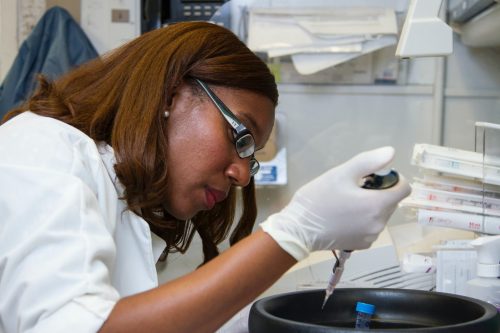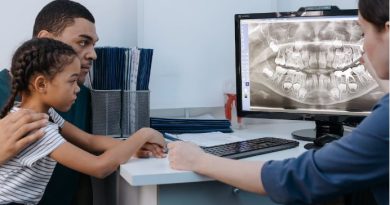The World of Prenatal Technology: Meeting Our Children in the Womb
Technology is changing every day to accommodate to our needs, but how does this transcend into the field of childbirth? Discover the world of prenatal technology here…
Prenatal technologies have really developed over the years. From basic ultrasounds, which reveal the fetus in the womb, to 3D imaging of a growing baby, to detecting genetic abnormalities, the growing list is endless.
Over the years, these developments in technology have made giving birth to children a much more joyous experience for many. Now, not only can expecting parents view their children from the womb, they can make more informed decisions about the being they’re carrying. This prevents a myriad of wrongful birth cases every day by detecting any life-changing issues before the birth.
The question is, how is this all possible? In this article, we’ll be discussing the many ways prenatal technology is changing the birthing picture for many. Take a look…
Contents
Seeing Your Baby in the Womb
Before we dive into the more intricate technologies surrounding genetic testing, let’s first discuss the more simple ultrasound technologies.
Basic Ultrasounds
The ultrasound was invented in 1956, and used for clinical reasons by Ian Donald, a Glaswegian obstetrician. Working with engineer, Tom Brown, they developed a prototype which became widely used in British hospitals in the 1970s.
Ultrasounds use sound waves to produce pictures of the inner body. They’re used in general medical care to identify swelling and infection in various organs throughout the body. For pregnancy, they’re used to view the growing fetus to identify any issues.
3-D Ultrasounds
Three-dimensional ultrasounds have really taken off over recent years, using slower frame rates to create a 3-D image. By taking images at various angles, and piecing them together, a 3-D rendering can be produced. This allows expecting parents to get a more personal view of their baby-to-be.
4-D Ultrasounds
Four-dimensional ultrasounds look similar to 3-D ones, but they show real-time movement, a bit like a video. This way, a parent can see their little one moving around in the womb!
Fetal Doppler
When it comes to meeting your baby in the womb for the first time, it’s not just about vision, it’s also about sound. A doppler is a handheld device which estimates the blood flow through the blood vessels by bouncing sound waves off the blood cells. Then, using a special jelly, it can amplify the sound of the fetal heartbeat.
Artificial Intelligence in Ultrasounds
AI has recently become part of the world of ultrasounds, mainly to help with the workflow of doctors. In a standard sonogram, hundreds of images will be acquired by a sonographer, which must then be individually reviewed to get a full picture of the fetus.
Al Lojewski, general manager of the GE Healthcare cardiovascular ultrasound division says that, “AI brings the potential for… the system [to] automatically pull all the images with that view… rather than managing a vast collection of images and measurements. This could save them critical time that they can now spend with their patients.”
Genetic Screening
The amazing thing about the above ultrasounds is that they can identify any visual markers of potential genetic diseases in the womb. These markers can then lead to more in-depth genetic screening to identify any glaring problems with a fetus.
These developing technologies prevent wrongful birth disputes by helping the doctor to identify any issues. It then creates an opportunity for parents to make an informed decision about their growing child’s future.
The main ways these issues are screened for, at multiple stages of pregnancy, are as follows:
Before Pregnancy
Testing for potential genetic anomalies is possible before pregnancy to identify if a parent is a carrier of a disorder. If they are, this means birthing a child with this illness is much more likely.
So, genetic carrier screening tests can be carried out before a baby comes into the picture through a simple blood sample or saliva test. These tests can look for genes of various genetic diseases. Some of the most common ones include:
- Spinal muscular atrophy
- Cystic fibrosis
- Tay-Sachs disease
- Fragile X syndrome
- Sickle cell disease
A carrier screening, like this, can help a person to make a choice about how they want to have children in future. The tests can also be done during the first few weeks of pregnancy so the parent/s can make an informed decision.
First Trimester
Other than an ultrasound, which can identify certain genetic markers, there are other tests which can be carried out to be sure of things. These include:
Chorionic Villus Sampling (CVS)
Chorionic villus sampling (CVS) is done between weeks 10 and 12 of pregnancy. It’s an invasive test where a small piece of the placenta is removed and checked for genetic problems in the fetus. There is a small risk that this test can induce a miscarriage, which is why they’re usually only done if:
- The mother is over 35;
- There’s a genetic history of genetic conditions;
- One parent is a carrier;
- Or, the ultrasound screening shows the fetus is at an increased risk of a birth defect.
Non-Invasive Prenatal Testing (NIPT)
Non-Invasive Prenatal Testing (NIPT) is a blood test taken from the mother during pregnancy. The placenta sheds cell free DNA (cfDNA) into the mother’s bloodstream, meaning the blood contains a mixture of placental and maternal cfDNA. Evaluating the cfDNA in the blood, alongside their age and propensity for a genetic disorder, means a greater picture can be determined.
This test uses DNA technology to assess whether a fetus has a high chance of certain chromosomal conditions. Specifically, it can test for various syndromes, including Down’s, Edwards’ and Patau’s.
Cell-Free Fetal DNA Testing
This is also a non-invasive test which checks the mother’s blood for the fetus’ DNA during around the 9-week mark of gestation. This is then examined for certain genetic conditions, such as Down syndrome. It may be recommended if an ultrasound shows any markers for genetic defects.
Second Trimester
Similarly, other testing during the second trimester can also clear things up to help the parents make a more informed decision. These include:
Maternal Blood Screening
Maternal blood screening (also called quad screen) checks the mother’s blood for four substances (alpha-fetoprotein (AFP), estriol, human chorionic gonadotropins (hCG) and inhibin A) which might indicate a problem. The test is carried out between 15 and 22 weeks of pregnancy.
Amniocentesis
Amniocentesis is usually done between weeks 15 and 20 of pregnancy. It’s an invasive procedure which occurs when a doctor inserts a hollow needle into the woman’s abdomen. This removes a small amount of amniotic fluid from the area surrounding the developing fetus.
Once obtained, this fluid is checked for genetic problems, and can also check how developed the baby’s lungs are in risks of premature birth. This is another test that could lead to a miscarriage, which is why it is only carried out when necessary.
Glucose Screening
This test checks to see if the mother has gestational diabetes, which can affect some pregnant people during pregnancy. It’s usually tested for during the 24- to 28-week marks.
The Wonderful World of Prenatal Technology
As you can see, the myriad of tests that can be carried out to check for genetic abnormalities, and to say hi to your little fetus, are truly amazing. More technologies are being worked on every day to improve these diagnostics, and make pregnancy as simple as can be.




